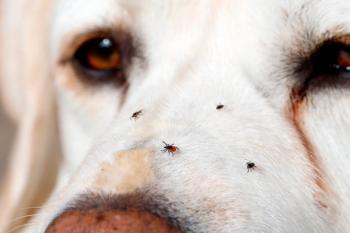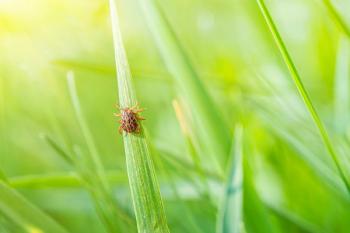
Pictorial evidence: Heartworm disease and its damage
Even if heartworm infection is treated, we all know it does serious, permanent damage to the body. This in-depth look at that damage will renew your commitment to consistent prevention recommendations for your veterinary patients.
Heartworms are present and known to be transmitted in all 48 contiguous states in the United States and Hawaii, making the risk of infection and the development of permanent disease real. The following images are from a variety of canine cases and represent the various types of gross pathology heartworms can cause.
(All photos courtesy of Dr. Stephen Jones and the American Heartworm Society)Normal pulmonary artery
The damage caused by heartworm disease is progressive, and changes become increasingly evident as heartworm infection persists. Just for comparison, here is an image of a normal pulmonary artery with an exceptionally smooth endothelial surface.
Beginnings of infection
The adult heartworm spends most of its life within the lumen of the pulmonary arteries. With the forceful flow of each heartbeat, worms are agitated back and forth, causing trauma to the delicate endothelial lining. The trauma caused by even a small number of heartworms can lead to rapid and often permanent change within the pulmonary arteries.
Arterial inflammation
Arterial inflammation leads to thickening of the endothelial surface, villous hyperplasia and, ultimately, rugous endarteritis. On the left, we see an example of mild change within the main pulmonary artery while in the more advanced case on the right, we see extensive rugous endarteritis and dilatation. This type of change is often irreversible.
Disease of the lobar pulmonary arteries
These images depict changes commonly seen in the lobar pulmonary arteries of dogs infected with heartworms. On the left, the proximal aspect of the artery appears relatively normal, but the distal artery has severe proliferation of the endothelial lining, which can lead to restricted and turbulent blood flow. On the right, the entire right caudal lobar artery and its branches reveal an irregular and thickened endothelial surface. Several proliferative lesions are present at the bifurcation of several smaller arterial branches. One of these branches is distinctly occluded by fibrosis.
Obstructive disease
Microscopic changes often reflect fibrosis of the smaller capillaries and arterioles, but much of the clinical disease that results from heartworm infection is the consequence of obstructive disease within the larger arteries. These images show how high worm numbers appear to nearly occlude smaller arteries, potentially leading to physical obstruction and decreased blood flow.
Embolic obstruction
Although heartworms can live up to seven years, most die much earlier. As heartworms die naturally, they collapse into the distal vasculature and incite thrombus formation. When this occurs, blood flow is either partially or completely obstructed, and a strong inflammatory response ensues. Exercise intolerance, coughing, labored breathing and, ultimately, congestive heart failure can result.
Congestive heart failure
As obstructive disease progresses, involving additional arteries, blood flow becomes dramatically impeded. This leads to increased pressure and dilatation of the pulmonary arteries and the right side of the heart. In severe cases, cardiac output decreases and congestive heart failure ensues.
Caval syndrome
When heavy heartworm infections occur, multiple worms can be displaced to the right heart and the vena cava. Worms often become tangled or knotted and interfere with the function of the tricuspid valve. This image represents a heart and great vessels from a pet with caval syndrome, a difficult and life-threatening illness. Heartworms can be seen protruding from the transected cranial and caudal vena cava.
Tricuspid insufficiency
Because heartworms are mobile, an individual worm can venture into the right heart and become entangled in the chordae tendineae of the tricuspid value. This finding often results in valvular insufficiency and right-sided congestive heart failure. Interestingly, this has been observed even in patients infected with a low number of worms.
Heartworm damage: What lies beneath
The clinical appearance of heartworm disease can vary significantly. Some patients present with overt symptoms, while others do not. Nevertheless, the pathology depicted in these photos demonstrates that heartworm damage is insidious and real. Pets infected by heartworm develop pathology, even when only a few worms are present. And while treatment can eliminate an infection, it cannot necessarily reverse the resultant damage. Routine, persistent prevention represents the only approach to avoiding the disease caused by heartworms.
Stephen Jones, DVM, practices at Lakeside Animal Hospital in Moncks Corner, South Carolina. He will be president of the American Heartworm Society through September 2017.
Newsletter
From exam room tips to practice management insights, get trusted veterinary news delivered straight to your inbox—subscribe to dvm360.






